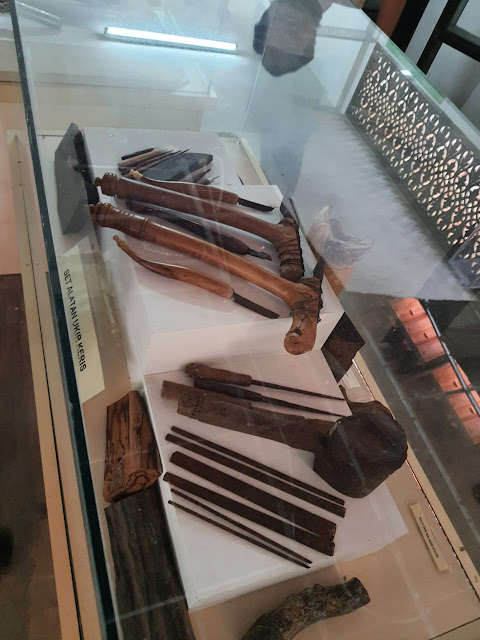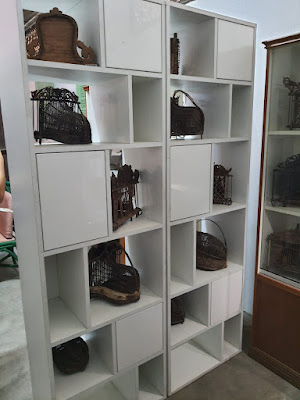14. ANR warisan Academy, Wood Carving Academy (Tok Bali, Bachok, Kelantan, Malaysia)
ANR Warisan Academy, Wood Carving Academy (Tok Bali, Bachok, Kelantan, Malaysia)
Nik Rashiddin Academy (ANR) established in 2010 grew out of the Kandis Resource Center (KRC) carrying out activities to preserve the national sculpture heritage since year 2000. Founded by the late Nik Rashiddin Hj. Nik Hussein. He was born in Kota Bharu and raised with soul and spirit East Coast traditional Malay carpentry. Keris Hulu Tajong originating from Patani is a symbol and emblem of greatness Malay society which is synonymous with his work.
Here, we are bound to be amazed at the
intricacy of the woodcarvings on show.
Wood carving is among the many delicate arts derived from the work of wood carvers. It can be seen as an object decorating buildings such as mosques, houses and more. There are various types of carvings that find their way to the architecture in Terengganu. Places in Malaysia have various kinds of carving, mostly originate from the culture or outside influence. Terengganu is a state within the Malaysian Peninsular that possesses various kinds of carving that are both unique and beautiful to its architecture.
.jpeg)
It then triggers me to study the structure of Terengganu Malay traditional woodcarving motifs based on interpretations of Malay aesthetic principles and elements which is being applied to the new design motifs in contemporary artwork of painting and installation art. The artist’s statement is related to a master carver to create the new motif design interpreting Malay aesthetic principles and elements in their work.
It can be said that the structure of Terengganu Malay traditional woodcarving motifs is determined by three steps of structural motif. The findings of these three steps are vital in understanding the intricate artworks of woodcarving motifs. They should be used as guidelines by those who are related in the artwork fields such as the artist creating a new design, thus giving meaning and depth to overall work, without sacrificing the unique Malay aesthetics and identity.
.jpeg)




.jpeg)
.jpeg)

.jpeg)
.jpeg)




.jpeg)


.jpeg)

.jpeg)

.jpeg)
.jpeg)
.jpeg)

.jpeg)








Comments
Post a Comment